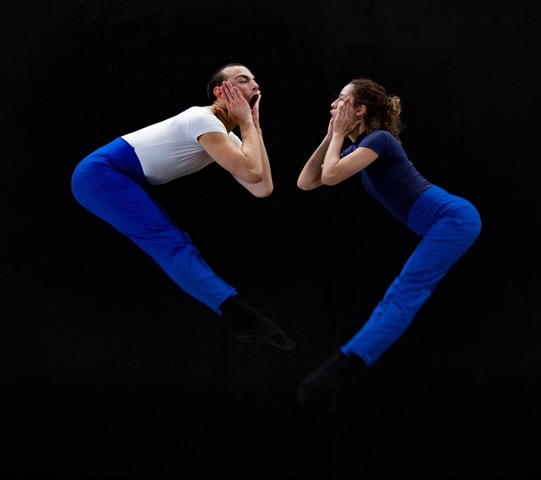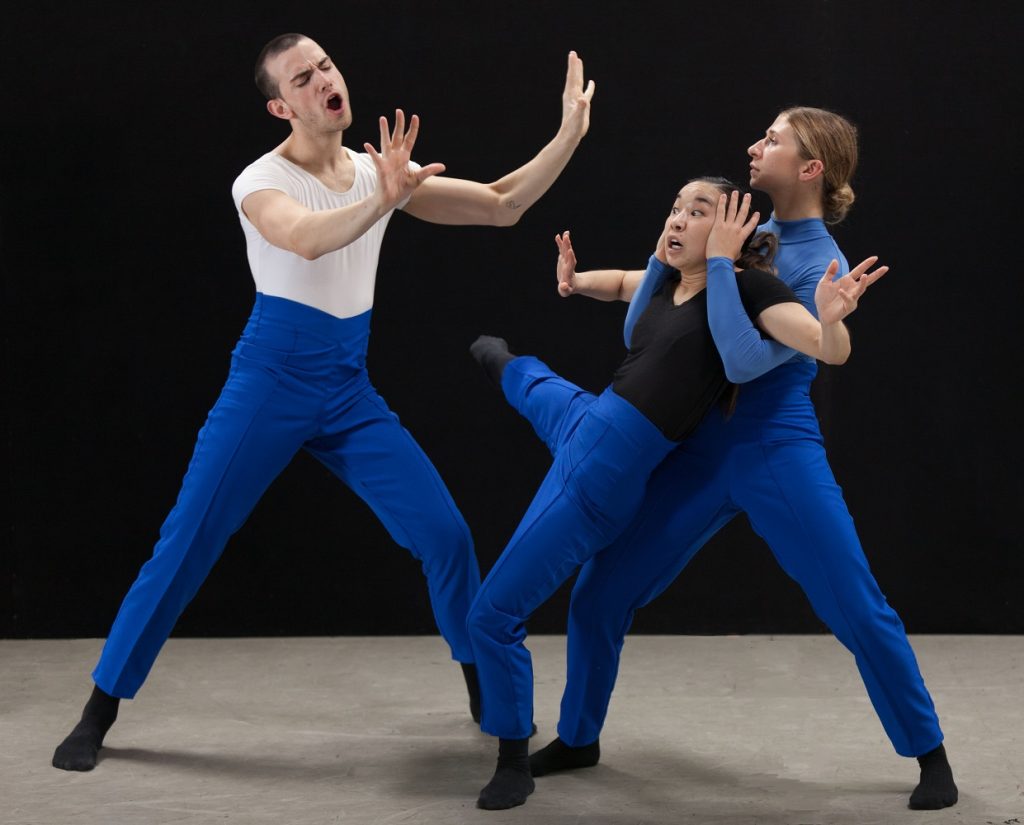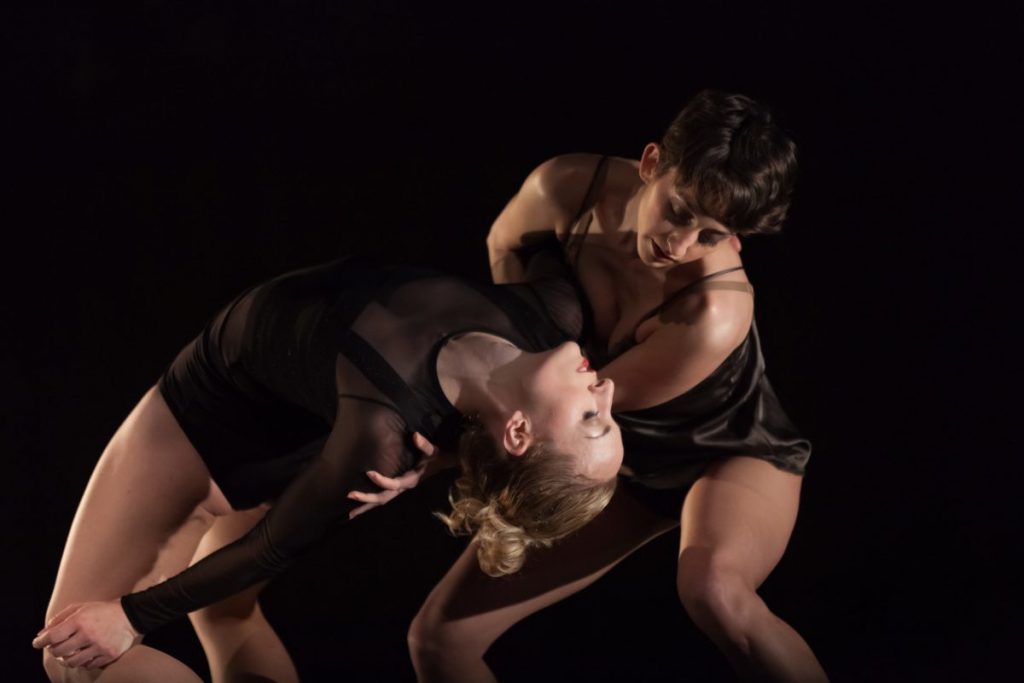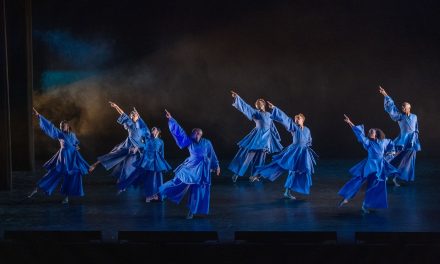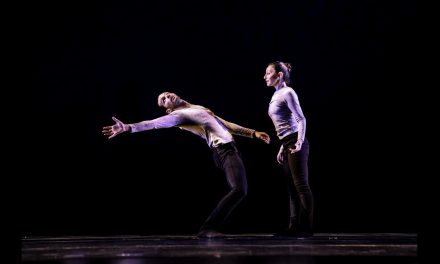Under the guidance of Artistic Director and Choreographer Laurie Sefton, the Clairobscur Dance Company presented an outstanding performance at the Nate Holden Performing Arts Center. Sefton has long been one of Los Angeles’ most talented choreographers, and with her two new works, Supremacy Ride and Triptych: Experience in Defiance, she has raised the bar for other companies in this town. This present cast is also one of Sefton’s most cohesive, which I say because this team of dancers radiate a strong chemistry as a unified company, and they are all equally talented.
Others have written that Sefton’s movement is “dense and detailed”, and indeed it is. In her new Supremacy Ride, however, Sefton has employed stillness that in no way detracts from that description of her choreography. On the contrary, those quiet moments add strength to a work that was inspired by the 2016 presidential election. Sefton researched gestures made this current POTUS and other world leaders, and used what she collected as a jumping off place for a central movement theme. Anyone familiar with the President’s mannerisms will either be amused or horrified, or both by these hand, arm and facial gestures seen throughout.
Supremacy Ride opens with the sound of the dancers clapping out a very repetitive rhythm. As the lights fade up, each dancer steps into a central spotlight and moves through a series of selected gestures several times. This repetition allows one to realize how familiar the gestures are and how often she/he has seen them over the past couple of years.
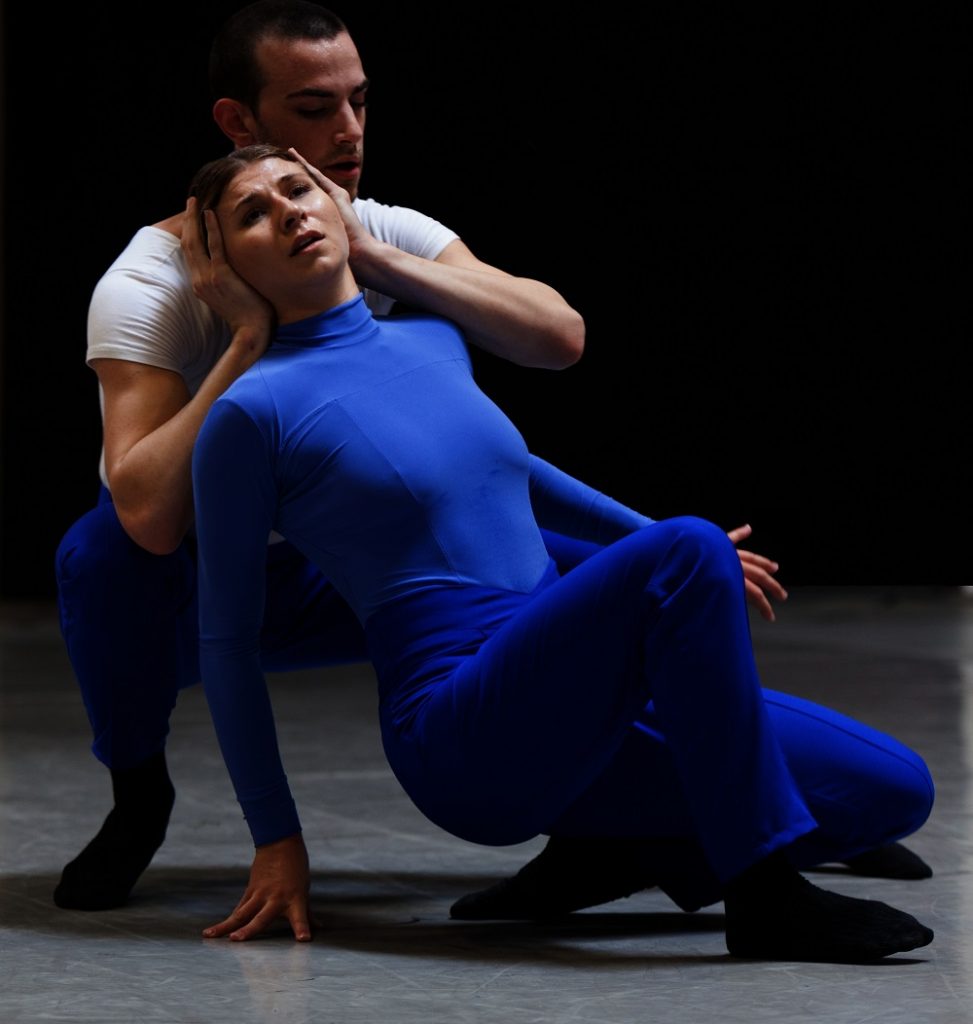
Johnathan Stanley, Samantha Blaz in Supremacy Ride – Clairobscur Dance Company – Photo by Denise Leitner
Sefton presents both the negative and the positive elements of what has so badly pulverized not just this country, but the entire world. She shows us the confusion, the turmoil, the brainwashing and the resistance to those who wish to take away our rights and, by doing so, destroy democracy. Sefton also addresses the role fear plays in politics and how the free press is treated. Jonathan Stanley grasps Ellen Akashi by the sides of her head, appearing to squeeze any independent thinking out of her while forcefully maneuvering her around the space. Sadly, he wins, and she is reduced to becoming a loyal, mindless follower. Stanley also repeatedly badgers another woman with a statement that is clearly against her beliefs, but as has been said, “Repeat a lie often enough and people will believe it’s true.”
Hope appears in sections where Sefton clearly depicts people marching in protest, fists raised. A tightly knit group and well-designed arm gestures signify unity and progress moving forward. Sefton’s vision is cautionary, but not despairing. She has amassed multiple authoritarian gestures, points out the dangers of mass brainwashing and/or self-induced ignorance, along with the possibilities of resistance and fashioned them into a powerful, beautifully crafted and marvelously performed work. It is a work that causes one to think and to assess one’s role in governance. It is also a dance that challenges and highlights her company’s talents. Akashi, Samantha Blaz and Camila Arana stand out, but they do not overshadow Sophie Diamond, Jessica Gadzinski, or Jonathan Stanley. Each one rises to the tasks set by Sefton.
Dan Weingarten’s lighting design for Supremacy Ride accentuates the division in our society and the crisscross of ideas that are bantered back and forth. Equally exciting is the music score by Henryk Mikolaj Górecki that intensifies, echoes and haunts this environment. The costumes designed and realized by Stephanie Luckey add individuality and unity to the characters.
Jason Chu is a Los Angeles based hip hop artist, poet and activist who writes that he is “on a mission to speak hope, healing, and justice in a broken world.” Chu and Sefton collaborated to create an intense and inspiring work entitled Triptych: Experience in Defiance. According to Sefton, Chu had previously written the text for the first two sections, Freedom and New Word for Immigrant, and she choreographed movement inspired by his writings. For A Billion Brilliant Bits, the two artists worked closely together to create the finished product. As Chu phrased it, “We tiptoed into each other’s territory.”
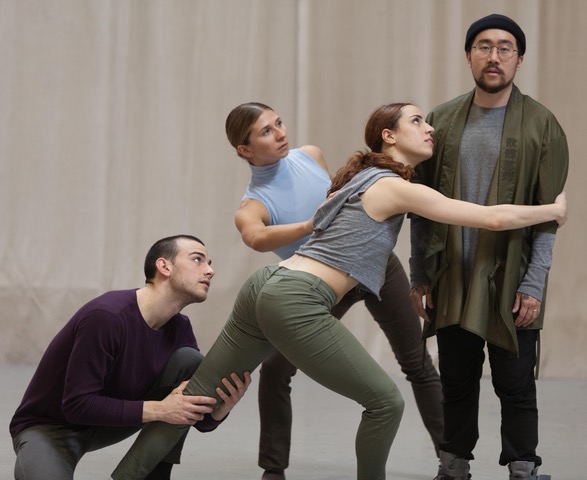
Rehearsal photo of Triptych: Experience in Defiance – Jonathan Stanley, Samantha Blaz, Camila Arana, Jason Chu – Photo by Denise Leitner
Freedom involves Chu reciting his poetry in a rapper-like manner, and the amazingly talented Ellen Akashi, responding physically. Sometimes she mirrors his words with movement; other times she reacts. Chu begins each verse with “Do what you do out of freedom.” It is a simple but powerful idea that seems to escape most of humankind. In the end she embraces Chu to offer support and to help soothe his anger. In New World for Immigration, Chu speaks to the sweat and hard work by newly arrived immigrants to advance themselves and their children, pointing out the difficulties of receiving citizenship.
The third section, A Billion Brilliant Bits, has Chu interacting with the cast of Triptych: Akashi, Camila Arana, Samantha Blaz and Jonathan Stanley. “I worry leaving myself behind,” Chu repeats. The dancers’ movements reflect his words as Chu moves smoothly around the space and later lifted and carried overhead. Another phrase that rang out was “I look at you not seeing what I want to see in you.”
Triptych: Experience in Defiance is a poignant work. Chu dominates the stage, but Sefton is a master at directing the audience’s attention. She brings the dancers into view and then allows them to recede into the background without diminishing her vision. What Sefton does appear to let slip is conversation from the dancers to Chu. He speaks at them and at the audience throughout, but the dancers are not always allowed to talk directly to him. I am not advocating that the dancers talk onstage, but that their opinions on the subject Chu raises are not always clearly expressed.
Girl, Get Off premiered last year, 2017, and the work has matured and crystallized in thought. The opening solo, performed brilliantly by Ellen Akashi, introduces a woman questioning her sexuality. Her sexual appetites expand to include intimacy with another woman, a man, and threesomes with numerous gender variations. The piece clearly represents these interactions without ever becoming vulgar. Jessica Gadzinski, Samantha Blaz and Camila Arana give convincing performances of women with a range of, what some might call, sexual fetishes. Stanley is also very strong in this dance, but the man’s role is purposefully less important.
As well as time and experience, what has helped solidify Girl, Get Off is something that I referred to in this article: the unity of talent. This current cast of Clairobscur Dance Company dancers are all working on the same professional talent level.
The lighting design by Lap Chi Chu, the very appropriate costuming by Laurie Sefton with Leslie Karten and Ruth Fentroy, the staging, and Laurie Sefton’s choreography came together to create a passionate and exciting piece. The intense music that drove the piece was an original score by Bryan Curt Kostors, with additional music by Apparat, Nosja Thing, Massive Attack and UNKLE.
Featured Photo: Jonathan Stanley, Sophie Diamond in Supremacy Ride – Photo by Denise Leitner.
To learn more about Clairobscur Dance Company, click here.
More about Jason Chu, click here.
To view the LA Dance Chronicle Calendar of Performances, click here.

